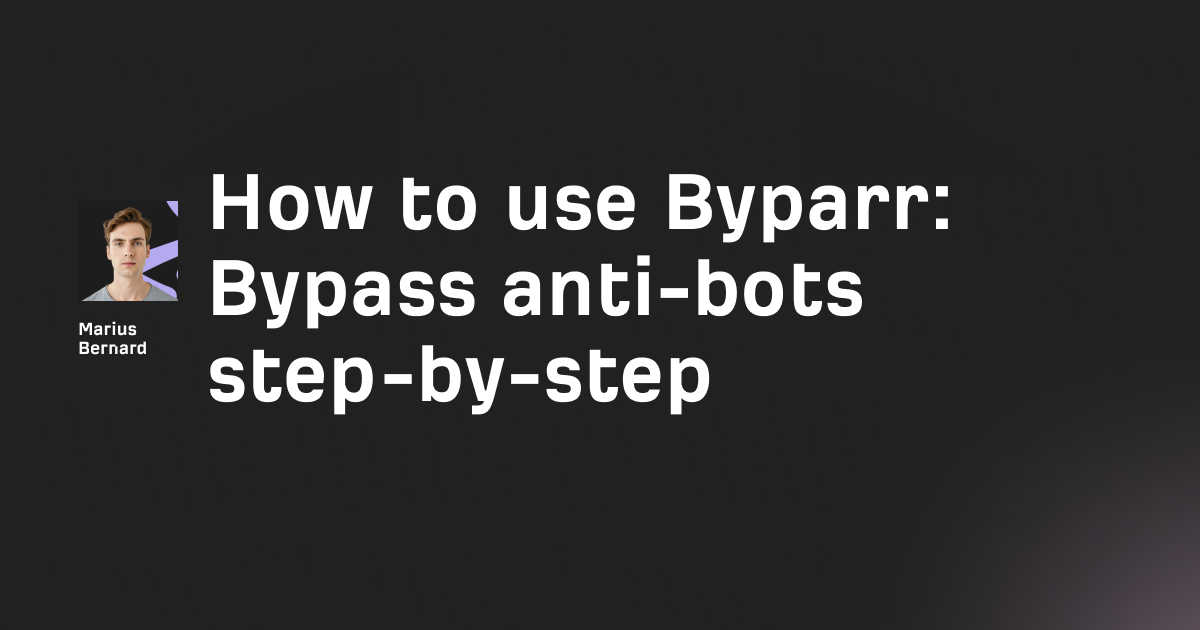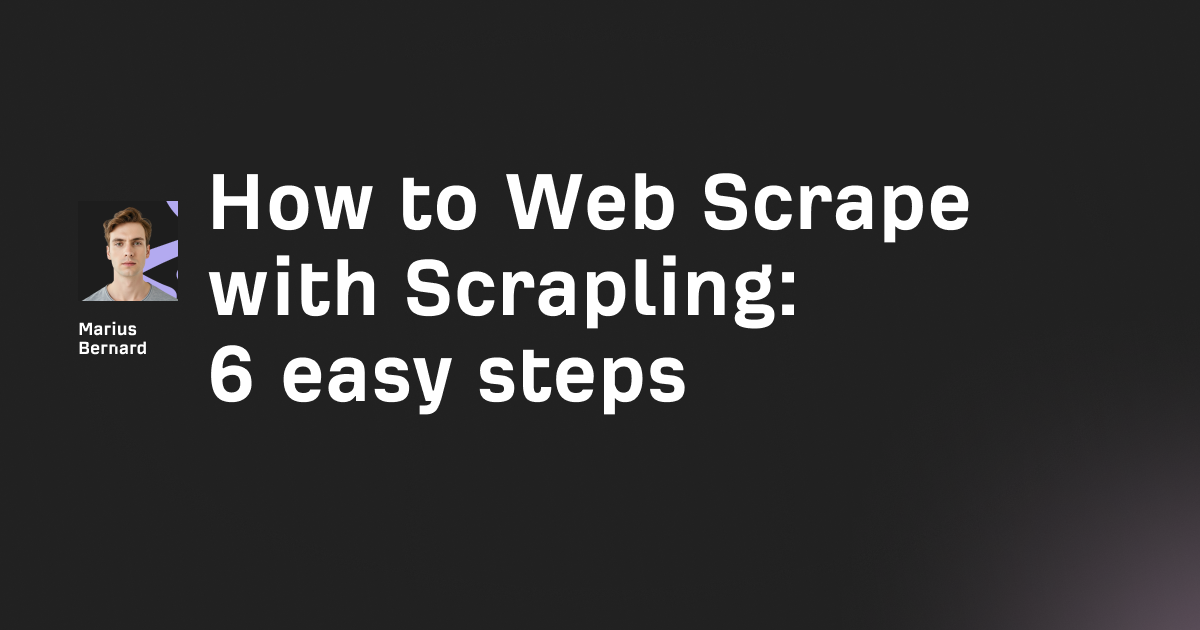With Cloudflare iterating fast on anti-bot protections, Cloudscraper—once a handy shortcut—now breaks more often than it works. If you’ve been seeing more 403s, infinite challenges, and Cloudflare Error 1020 “Access Denied”, you’re not alone.
The good news: in 2025 there are Cloudscraper alternatives that are more reliable, actively maintained, and built for modern defenses like Bot Management v2, behavior analysis, fingerprinting, and heavy JavaScript rendering.
This guide walks through what Cloudscraper is (and where it falls short), the five best alternatives, practical examples (with code blocks you can paste), and a quick comparison to help you pick the right fit.
Ethics & compliance: Only scrape data you’re allowed to access. Respect robots.txt, site terms, rate limits, and regional data/privacy laws. Avoid defeating access controls or CAPTCHAs when you don’t have explicit permission.
What is Cloudscraper and Why You Might Need an Alternative
Cloudscraper is a Python library layered on top of requests. Historically, it tried to “act like a browser” long enough to pass Cloudflare’s JavaScript challenges. That used to be enough. In 2025, it typically isn’t.
Where Cloudscraper struggles now:
- Maintenance gaps. Without frequent updates, it lags Cloudflare’s evolving checks.
- Stronger bot defenses. Cloudflare Bot Management v2 mixes behavior analysis, robust fingerprinting, and server-side detections that simple header spoofing won’t beat.
- Dynamic rendering. It can’t actually run JavaScript, which is a deal-breaker on modern, hydrated front-ends.
- CAPTCHAs (e.g., reCAPTCHA and hCAPTCHA) are common blockers; Cloudscraper doesn’t solve them.
- No human-like actions. There’s no scrolling, clicking, or timing variability—signals real browsers produce and anti-bot systems expect.
If Cloudscraper has been letting you down, your best path is either (a) automation with real browsers (Playwright, Selenium, Puppeteer), or (b) managed scraping APIs that bundle rotating residential/ISP proxies, headless rendering, and CAPTCHA handling. High-quality proxies themselves are also core to nearly every serious setup.
Top 5 Alternatives to Cloudscraper
Below are five Cloudscraper alternatives that actually keep up with Cloudflare in 2025. Each section includes key features, a quick example, and pros/cons to help you decide.
1) Proxies
Sometimes the simplest upgrade is the biggest win. Residential, rotating, and ISP proxies mimic real user traffic, distribute your requests, and cut down on 403 and CAPTCHA triggers. Proxies aren’t a complete solution, but paired with Requests, Playwright, or Puppeteer, they can be the difference between constant blocks and steady throughput.
Key features:
- Residential/ISP IPs that look like real users
- Automatic rotation for scale and anonymity
- Geo-targeting by country, city, or ASN
- HTTP and SOCKS support
- Often bundled session control and sticky sessions
Example (Python requests with rotating proxy):
import requests
proxies = {
"http": "http://username:password@proxy-provider.com:8000",
"https": "http://username:password@proxy-provider.com:8000"
}
resp = requests.get("https://www.example.com", proxies=proxies, timeout=30)
resp.raise_for_status()
print(resp.text[:500])
Pros:
- Full control over IP pools and request behavior
- Works with nearly any stack (Requests, Playwright, Puppeteer, Selenium)
- Reduces CAPTCHAs and 403 blocks
- Scales from simple scripts to complex crawlers
Cons:
- Quality varies by provider—cheap lists are noisy and burned
- Residential proxies can be expensive at volume
- Still need a scraper/browser to do the work
Tip: For tougher targets, prefer residential or ISP proxies over datacenter IPs, and use sticky sessions for flows that require cookies or login persistence.
2) Playwright
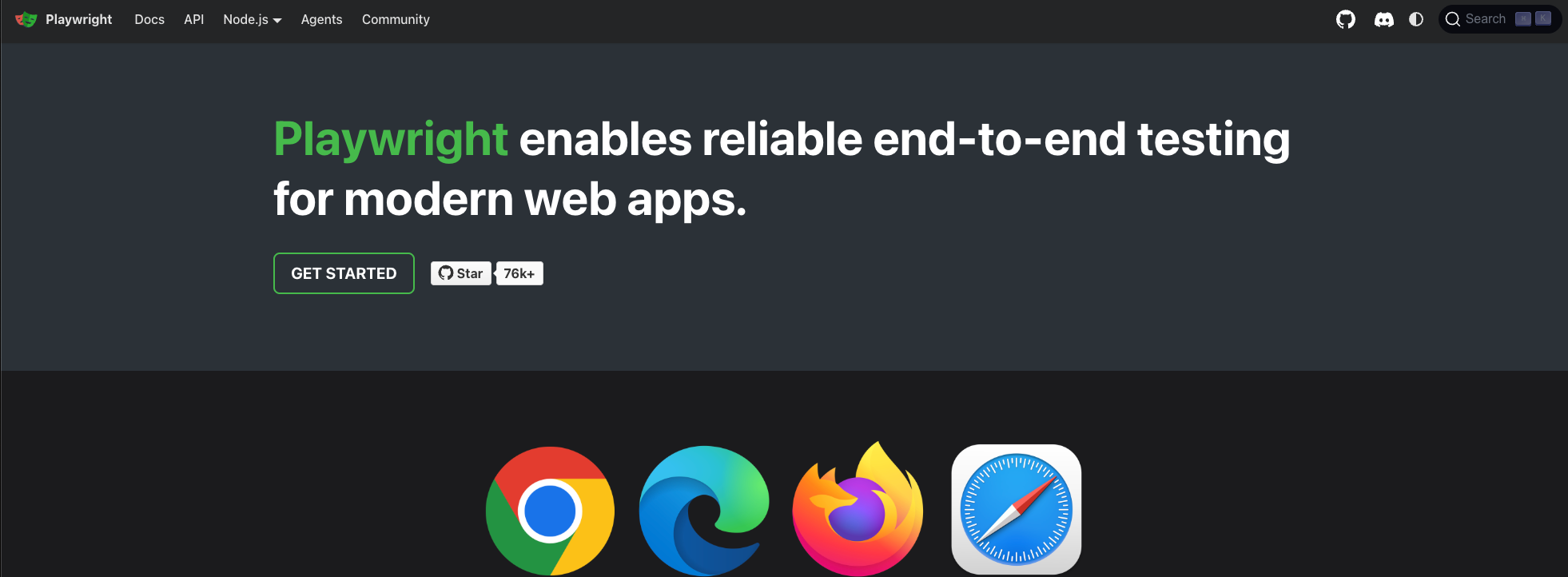
Playwright (by Microsoft) is the most capable browser automation library for scraping in 2025.
It controls Chromium, Firefox, and WebKit, runs headless or headed, and ships with smart waits, robust selectors, and great debugging. It’s ideal for JavaScript rendering, single-page apps, and interactions that imitate humans.
Key features:
- Cross-browser support (Chromium, Firefox, WebKit)
- Multi-language: Python, JavaScript/TypeScript, Java, .NET
- Auto-waiting & smart selectors reduce flakiness
- Network interception for request/response control
- Device emulation (mobile/desktop), geolocation, user agent spoofing
Example (Python, minimal page render):
from playwright.sync_api import sync_playwright
def scrape_with_playwright(url: str) -> str:
with sync_playwright() as p:
browser = p.chromium.launch(headless=True) # set False to debug
context = browser.new_context()
page = context.new_page()
page.goto(url, wait_until="networkidle")
html = page.content()
browser.close()
return html
html_content = scrape_with_playwright("https://www.example.com")
print(html_content[:500])
Pros:
- Real browser signals; human-like interactions
- Excellent docs, actively maintained
- Powerful for JS-heavy pages and complex flows
Cons:
- Heavier than simple HTTP libraries
- Requires some setup (browser binaries, contexts, timeouts)
- Not as “drop-in” as a managed API
Note: Pair Playwright with rotating residential proxies for tougher Cloudflare targets. You can set proxies at the context level to isolate sessions.
3) Selenium
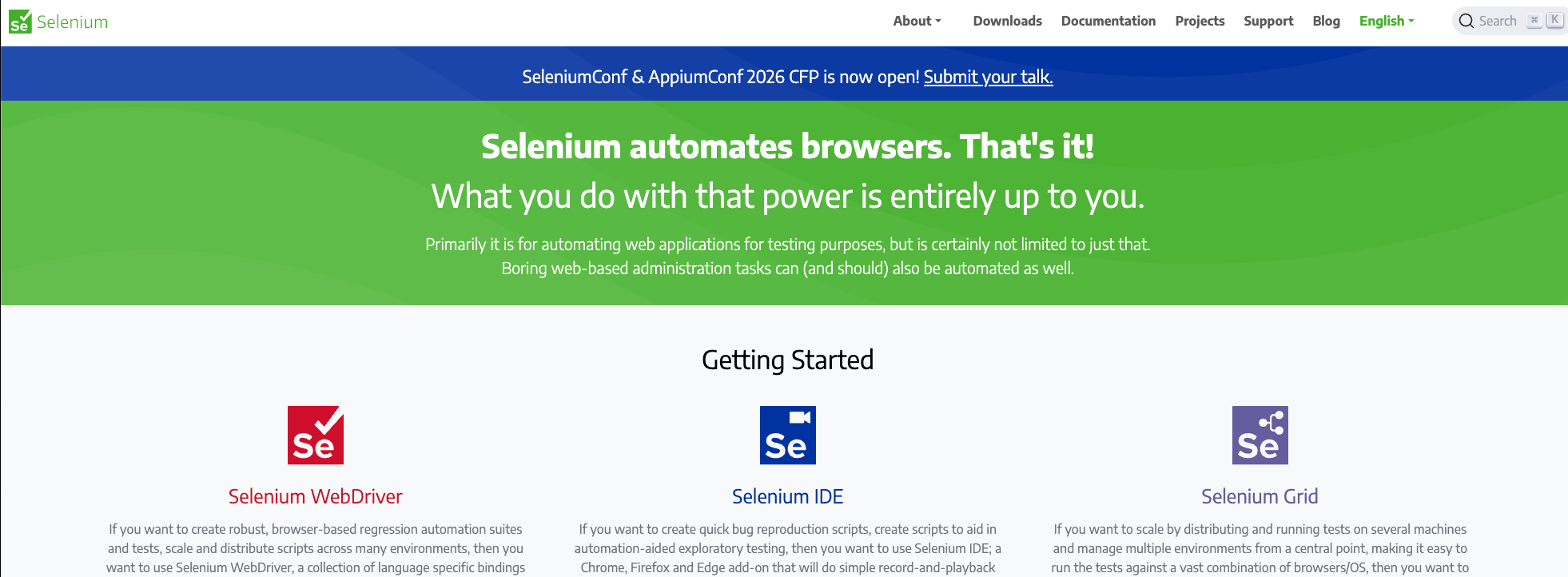
Selenium is the veteran of browser automation. While built for testing, it can scrape effectively—especially when you need full browsers and long-lived sessions.
It’s slower and more verbose than Playwright, but its ecosystem and language support are huge.
Key features:
- Works with all major browsers via WebDriver
- Multi-language (Python, Java, C#, etc.)
- Mature ecosystem and cloud vendors (Grid, remote drivers)
- Simulates nearly any user action
Example (Python + ChromeDriver Manager):
from selenium import webdriver
from selenium.webdriver.chrome.service import Service
from webdriver_manager.chrome import ChromeDriverManager
driver = webdriver.Chrome(service=Service(ChromeDriverManager().install()))
driver.get("https://www.example.com")
content = driver.page_source
driver.quit()
print(content[:500])
Pros:
- Stable, well-known API; huge community
- Good for sites requiring meticulous form fills, clicks, and scrolls
- Plug-ins and cloud runners abound
Cons:
- Slower and more brittle than Playwright
- Manual WebDriver nuances; more boilerplate
- Needs extra care to reduce bot fingerprints
Tip: Prefer undetected driver variants only where policies and terms allow. As always, ensure your use is compliant and authorized.
4) Puppeteer
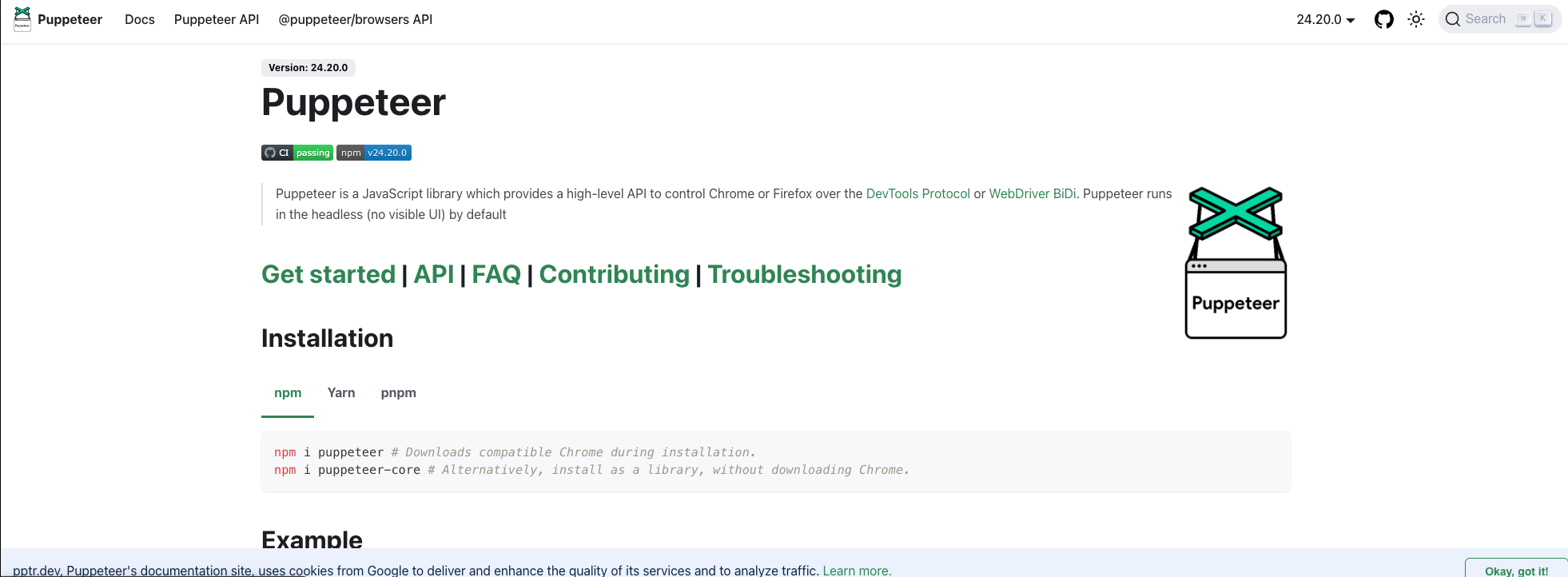
Puppeteer is a Node.js library from the Chrome team, tightly integrated with Chromium and DevTools.
If your stack is JavaScript/TypeScript, it’s a natural fit. It’s fast, predictable, and great for screenshots, PDFs, and extracting dynamic content. There’s Pyppeteer for Python users, though it’s less mature.
Key features:
- High-level control over Chromium/Chrome
- Fast with solid default timeouts and navigation helpers
- Built-in hooks for DevTools and performance tracing
- A healthy plug-in ecosystem for stealth and anti-bot hygiene
Example (Node.js):
const puppeteer = require('puppeteer');
(async () => {
const browser = await puppeteer.launch({ headless: 'new' });
const page = await browser.newPage();
await page.goto('https://www.example.com', { waitUntil: 'networkidle0' });
const content = await page.content();
await browser.close();
console.log(content.slice(0, 500));
})();
Example (Python via Pyppeteer):
import asyncio
from pyppeteer import launch
async def scrape_with_pyppeteer(url: str) -> str:
browser = await launch(headless=True)
page = await browser.newPage()
await page.goto(url, waitUntil='networkidle0')
html = await page.content()
await browser.close()
return html
html_content = asyncio.get_event_loop().run_until_complete(
scrape_with_pyppeteer("https://www.example.com")
)
print(html_content[:500])
Pros:
- Excellent for dynamic, JS-driven sites
- Smooth Chromium integration and tooling
- Great performance when tuned
Cons:
- Tied to Chromium/Chrome only
- Python support is unofficial; community-maintained
- You’ll still need proxies and session strategy for hard targets
5) ScraperAPI
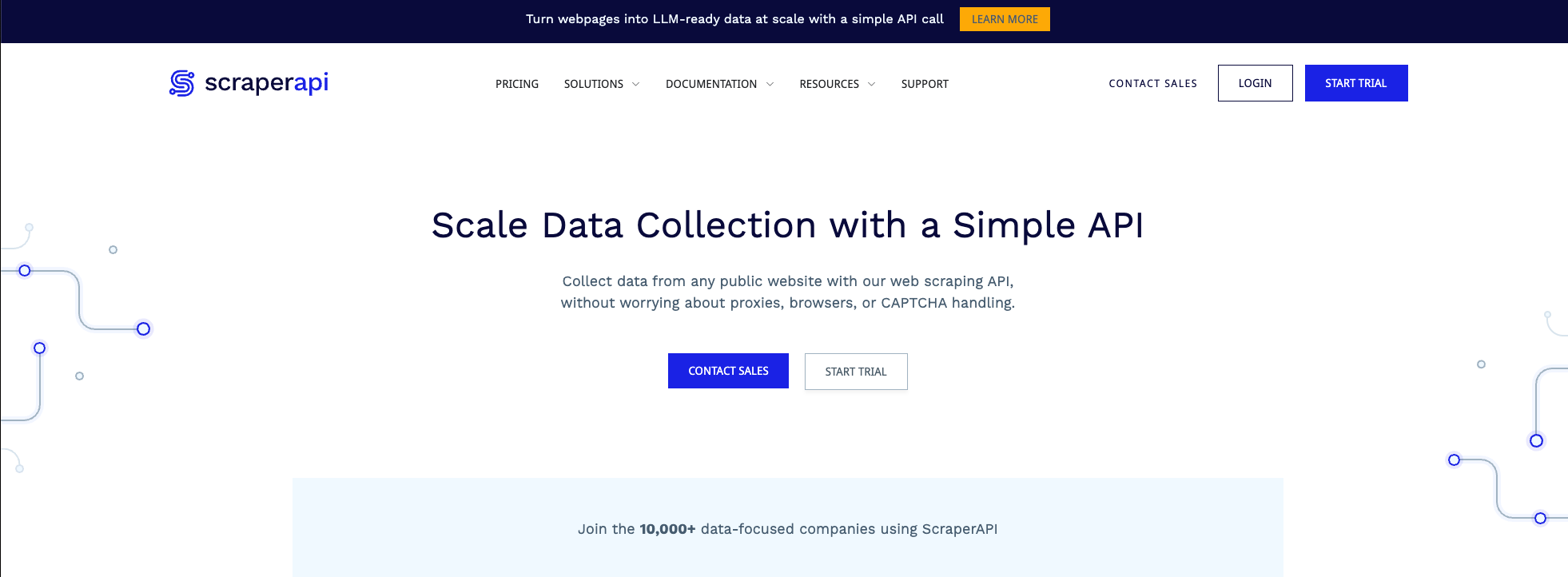
ScraperAPI is a managed scraping API: you pass a URL, it handles proxies, CAPTCHAs, headless rendering, geo-targeting, and retries for you.
It plays a similar role to ZenRows (another popular scraping API), and both target the “I just need the HTML and don’t want to babysit infrastructure” use case.
Key features:
- Automatic proxy rotation and session handling
- JavaScript rendering (headless browser under the hood)
- CAPTCHA handling built-in
- Geolocation targeting and HTTP(S) support
- Simple REST API interface from any language
Example (Python):
import requests
url = "https://www.example.com"
api_key = "your_scraperapi_key"
response = requests.get(
f"https://api.scraperapi.com/?api_key={api_key}&url={url}&render=true",
timeout=60,
)
response.raise_for_status()
print(response.text[:500])
Pros:
- Drop-in simple; no browser binaries or proxy ops
- Pay for usage; scale up/down quickly
- Great for teams who want results, not plumbing
Cons:
- Paid plans; cost grows with volume
- Less fine-grained control vs. owning your browser stack
- You’re bound by provider limits and fairness policies
Related: ZenRows offers a similar managed model (proxies + rendering + retries). If you prefer API simplicity, evaluate ScraperAPI vs. ZenRows on pricing, geos, latency, and success rate for your specific targets.
Choosing the Right Alternative: Quick Recommendations
If you want something that “just works”:
- Pick a managed API like ScraperAPI (or ZenRows). You’ll avoid proxy sourcing, headless orchestration, CAPTCHA handling, and retries. Great for teams that value output over ops.
If you want deep control and future-proofing:
- Choose Playwright. It’s the most flexible browser automation option in 2025 for scraping JavaScript-heavy sites, user flows, and stateful interactions.
If you’re already invested in testing stacks:
- Selenium can still be a solid scraper when tuned carefully. Lean on Grid/cloud providers and good proxy hygiene.
If you’re all-in on Node.js:
- Puppeteer shines for Chromium workloads, DevTools hooks, and performance tuning.
If your current issue is “lots of blocks,” not missing features:
- Upgrade your proxies first. Switching to rotating residential or ISP proxies and using sticky sessions on logged-in flows is often the quickest unblocker.
Final Thoughts
Cloudscraper had a moment, but the web moved on—and so must your toolkit. Cloudflare’s anti-bot stack in 2025 leans on dynamic checks: JavaScript rendering, behavior and fingerprinting, and multi-layer challenges. To keep pace:
- If you want speed to value, choose API-based services: ScraperAPI (and competitors like ZenRows). You’ll skip proxy headaches, CAPTCHA wrangling, and browser orchestration.
- If you want control and extensibility, go with Playwright. It’s the most flexible browser automation option for modern, JS-heavy sites.
- Selenium remains dependable for teams steeped in its ecosystem.
- Puppeteer is an excellent fit for Chromium-only pipelines and Node.js shops.
- Don’t sleep on proxies: high-quality residential/ISP proxies with rotation and session control are foundational for stability, fewer CAPTCHAs, and fewer 403s.
Choose based on your budget, stack, and tolerance for infrastructure. With the right Cloudscraper alternative—and a bit of proxy and session hygiene—you’ll have a smoother scraping experience than Cloudscraper can offer in 2025.
Appendix: Quick-Start Snippets
Use these as starting points. Add your own error handling, logging, and compliance checks.
Requests + Proxy + Timeout
import requests
def fetch(url: str, proxy_url: str) -> str:
proxies = {"http": proxy_url, "https": proxy_url}
r = requests.get(url, proxies=proxies, timeout=30, headers={
"User-Agent": "Mozilla/5.0",
"Accept-Language": "en-US,en;q=0.9",
})
r.raise_for_status()
return r.text
print(fetch("https://www.example.com",
"http://username:password@proxy-provider.com:8000")[:500])
Playwright + Selector Wait
from playwright.sync_api import sync_playwright
with sync_playwright() as p:
browser = p.chromium.launch(headless=True)
ctx = browser.new_context()
page = ctx.new_page()
page.goto("https://www.example.com")
page.wait_for_selector("main, #app, body") # render-ready
print(page.title())
browser.close()
Puppeteer + Network Idle
const puppeteer = require('puppeteer');
(async () => {
const browser = await puppeteer.launch({ headless: 'new' });
const page = await browser.newPage();
await page.goto('https://www.example.com', { waitUntil: 'networkidle0' });
console.log(await page.title());
await browser.close();
})();
Reminder: Keep your usage compliant and ethical. When in doubt, ask for permission or use official APIs.
Related readings:


